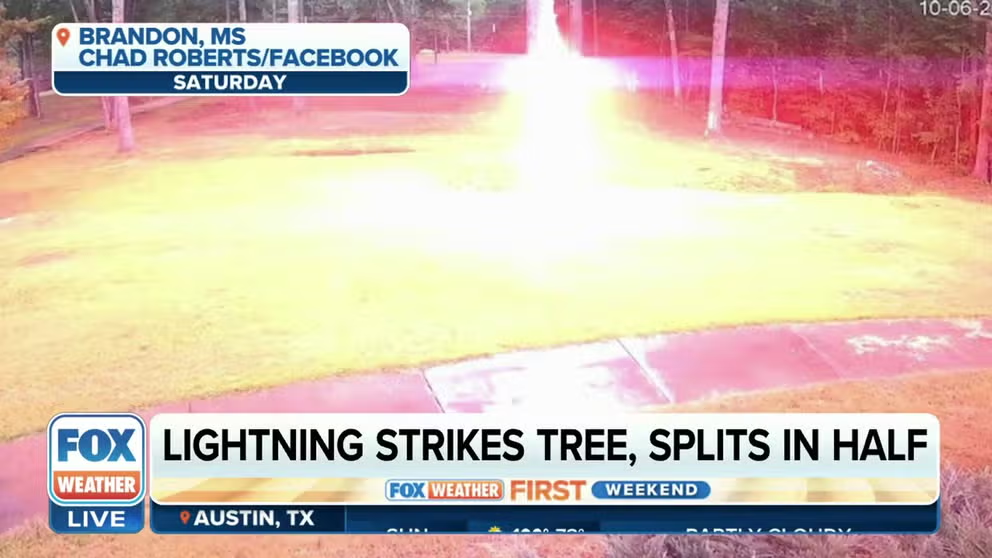Bolting it: Why you should rush indoors when you see lightning or hear thunder
About 20 lightning fatalities happen every year on average, according to the National Weather Service.
Watch: Video captures lightning bolt striking tree, splitting it in half
Cameras were rolling at a home in Brandon, Mississippi, when a bolt of lightning struck a tree and split it in half on Saturday, June 10.
Summer often means time out on the water, taking a hike or simply grilling in the backyard. While enjoying these outdoor activities, people should remain cautious of one weather threat in particular: lightning.
About 20 lightning fatalities happen each year on average, according to the National Weather Service. To help Americans remain aware of the dangers of lightning, the agency developed the slogans, "When thunder roars, go indoors" and "See a flash, dash inside."
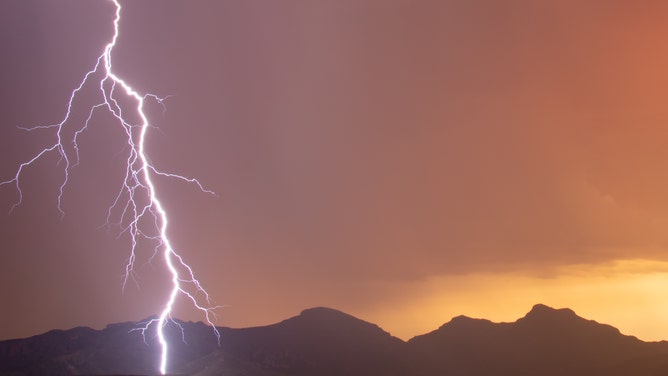
Dry lightning is photographed in Rio Rico, Arizona.
(Christopher Scragg / Getty Images)
"If you're close enough to hear that thunder or see that lightning, you're actually within the danger zone and close enough to be struck by lightning," said Aaron Treadway, senior program coordinator and lightning safety expert for the NWS.
This safety reminder applies even in areas that are not experiencing rain. Treadway mentioned lightning strikes called "bolts out of the blue," which can come out of the top of thunderstorms and strike areas where it’s not raining.
Here are some of his recommendations for staying safe while enjoying outdoor activities this summer.
Seek shelter immediately
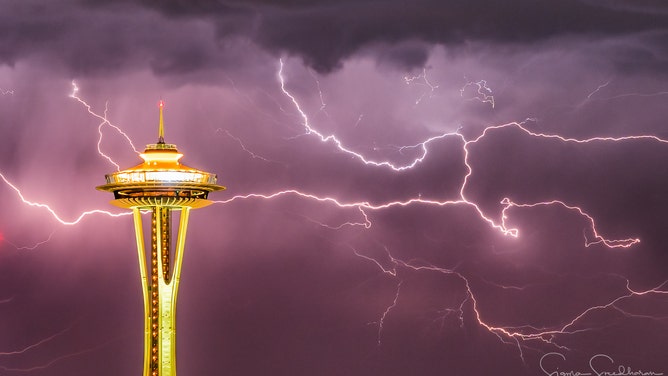
Lightning over Seattle on May 3, 2023.
(Sigma Sreedharan Photography / FOX Weather)
If you hear thunder or see a lightning strike, find a place to shelter in as soon as possible. Even if you are on the water or out on a hike, Treadway advises turning around or moving toward your closest shelter.
He noted how pop-up thunderstorms that often occur in the summer may first produce lightning strikes that remain within the clouds, giving you a little time to shelter. However, the storm may quickly strengthen enough to produce lightning strikes that travel to the ground – and hit people.
Once you’re sheltering, Treadway recommends waiting about 30 minutes before going back outside.
Best places to shelter in
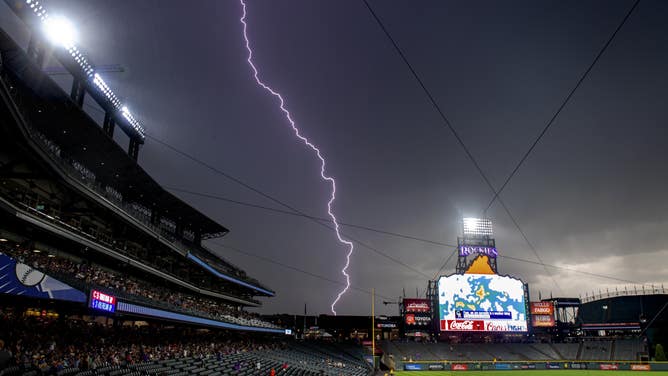
Lightning strikes behind Coors Field during a rain delay before a baseball game between the Cincinnati Reds and the Colorado Rockies on July 13, 2019 in Denver, Colorado.
(Julio Aguilar / Getty Images)
There may only be a few places where you can shelter while you’re out and about during a thunderstorm, but these are the safest ones:
- A solid, enclosed building.
- A car.
While there is still a risk for lightning if you’re in a building or a car, if lightning were to strike, the electric charge would move through the metal pipes in the building or metal body of the car, and you would remain safe.
Places and positions to avoid
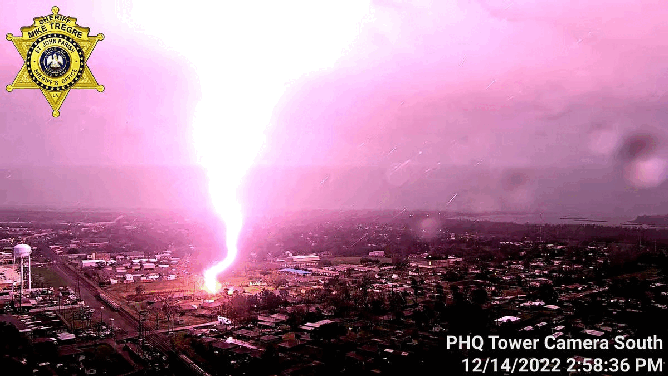
Cameras atop a communications tower at the St. John the Baptist Parish Sheriff’s Office in Louisiana were able to capture a stunning image of a bolt of lightning that struck a parking lot on Wednesday.
(Facebook.com/StJohnParishSheriff / FOX Weather)
When seeking shelter from lightning, Treadway recommends avoiding certain landscapes and structures:
- Avoid trees, particularly isolated trees that can attract a lightning strike.
- Avoid open, exposed areas, such as meadows or rock outcroppings.
- Avoid covered picnic areas, as it still exposes you to a lightning strike.
- Do not lay flat on the ground. If lightning does strike you, this position increases the surface area the charge can move through.
Be weather aware
"There is no safe place outside from a thunderstorm," Treadway said.
He advised anyone looking to enjoy the outdoors to watch the weather forecast and be aware of any thunderstorms that may be headed your way, and adjust plans accordingly.
WHAT HAPPENS TO YOUR BODY WHEN STRUCK BY LIGHTNING
"All it takes is one strike to the boat, to the water near you, to the tree or land near you," he said, noting how lightning can harm the nervous system and can ultimately be fatal.
